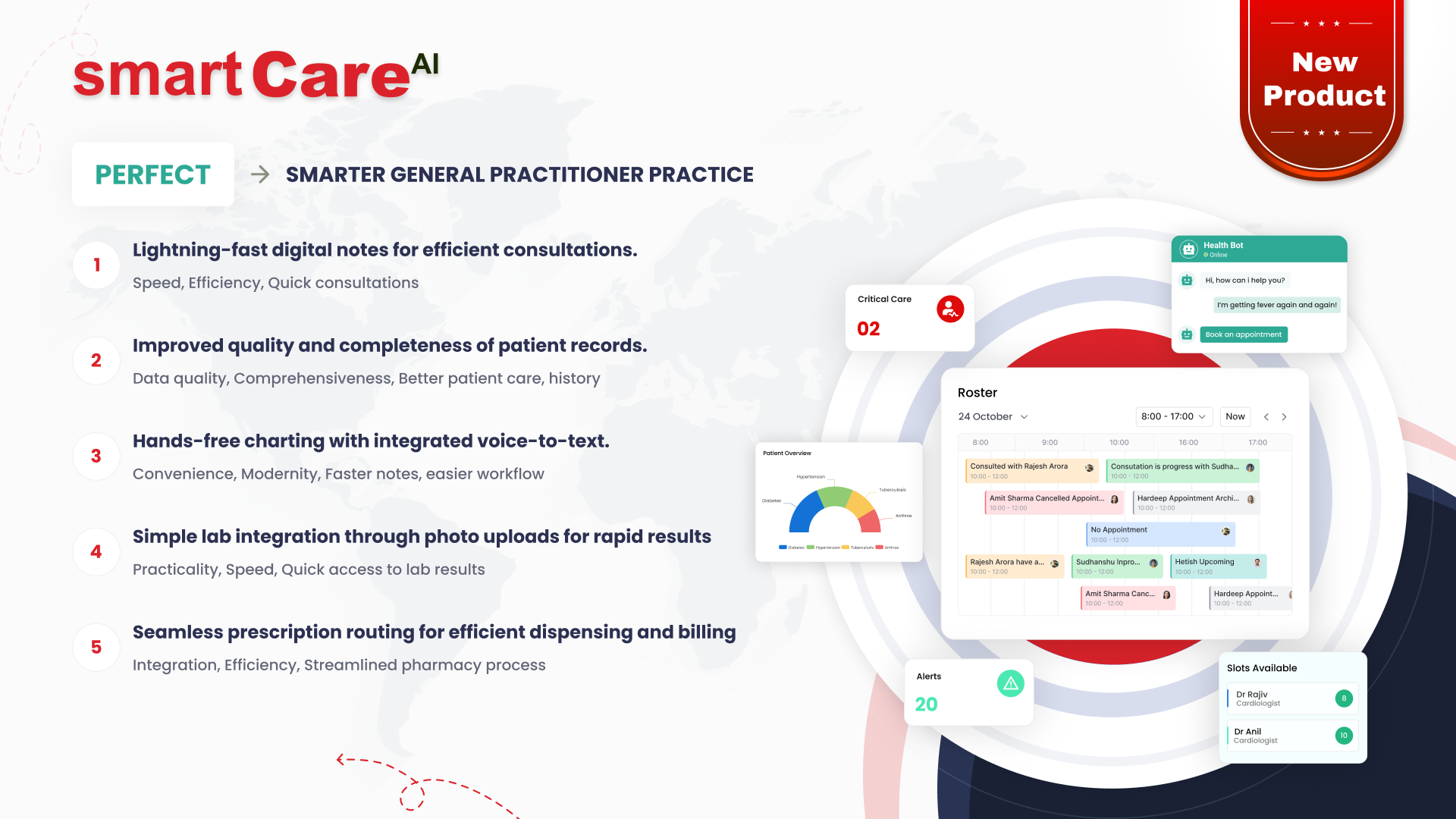Posted On July 15, 2025
Top 5 Healthcare Software Challenges & How to Solve Them
Healthcare software plays a vital role in improving patient care, streamlining operations, and managing data effectively. However, implementing and maintaining healthcare software comes with its own set of challenges. Understanding these common issues and knowing how to address them can save time, money, and frustration for healthcare providers.
Let’s explore the top five healthcare software challenges and practical ways to solve them.
Understanding Common Healthcare Software Challenges
Before diving into solutions, it’s important to recognise the key challenges that healthcare software users often face. These issues typically stem from the sensitive nature of healthcare data, the complexity of integrating new technologies, and the need for strict compliance with regulations. Common hurdles include data security risks, integration difficulties, user adoption, regulatory compliance, and software performance.
Recognising these challenges early helps organisations prepare better and implement software solutions that truly support healthcare goals.
Challenge 1: Data Security and Privacy Concerns
Protecting patient data is the highest priority for healthcare organisations. Healthcare software handles sensitive personal and medical information that, if compromised, can lead to serious consequences including legal penalties and loss of patient trust.
Many healthcare providers face challenges ensuring their software complies with standards such as the Australian Privacy Principles (APPs) and other healthcare regulations.
How to Solve It: Implement strong encryption methods, regular security audits, and access controls to limit data exposure. Training staff on cybersecurity best practices is equally important. Additionally, choosing software vendors with proven security credentials can greatly reduce risks.
How to Protect Sensitive Patient Information Effectively
Beyond technical solutions, effective protection of patient information requires a multi-layered approach. This includes regularly updating software to patch vulnerabilities, using secure authentication methods like multi-factor authentication, and maintaining detailed logs of data access.
Healthcare organisations should also develop incident response plans to quickly address any potential data breaches, ensuring minimal impact on patients and operations.
Challenge 2: Integration Issues with Existing Systems
Healthcare organisations often rely on multiple software platforms — from electronic health records (EHR) to billing systems. These systems may not always communicate smoothly, causing data silos and inefficiencies.
Integration problems can delay patient care, disrupt workflows, and increase administrative burdens.
How to Solve It: Choose healthcare software solutions that offer robust APIs and support industry standards like HL7 and FHIR, which facilitate interoperability. Conduct thorough planning to map out how different systems will connect and exchange data. Working with experienced integration specialists can also ensure a seamless process.
Solutions for Seamless Healthcare Software Integration
To achieve seamless integration, it’s essential to prioritise systems that are designed to work together or that offer customisable integration options. Testing integration points thoroughly before full deployment helps identify potential issues early.
Ongoing maintenance and monitoring are also key to keeping integrated systems running smoothly as software updates and organisational needs evolve.
Challenge 3: User Adoption and Training Difficulties
One of the biggest challenges healthcare organisations face is getting staff to adopt new software effectively. Healthcare professionals often have tight schedules and may resist changing established workflows.
How to Solve It: Providing comprehensive and ongoing training is essential. Tailor training sessions to different user groups—clinicians, administrative staff, and IT personnel—to ensure relevance. Using easy-to-understand guides, video tutorials, and hands-on workshops can improve confidence and competence. Encouraging feedback also helps refine the training process and addresses user concerns promptly.
Best Practices to Boost User Engagement and Training
To keep staff engaged with healthcare software, consider these best practices:
-
Simplify User Interfaces: Software should be intuitive and straightforward to reduce frustration.
-
Offer Continuous Support: Regular refresher courses and an accessible help desk support quick issue resolution.
-
Highlight Benefits: Demonstrate how the software improves daily tasks and patient care to motivate users.
-
Involve End-Users Early: Getting feedback during development helps tailor the system to real-world needs.
Following these practices promotes smoother transitions and maximises software effectiveness.
Challenge 4: Maintaining Software Compliance and Regulations
Healthcare software must comply with strict regulations regarding data privacy and patient safety. Failing to meet these standards can lead to legal issues and loss of trust.
How to Solve It: Stay updated with local and international regulations like the Australian Privacy Principles (APPs) and other healthcare data standards. Work closely with software vendors who prioritise compliance and implement regular audits. Automating compliance checks within the software can also reduce risks and ensure ongoing adherence.
How to Keep Your Healthcare Software Up to Date and Compliant
Healthcare regulations evolve frequently, so it’s crucial to keep your software current. Set up regular updates and patch management schedules to address security vulnerabilities and regulatory changes. Educate your IT team on compliance requirements and invest in robust cybersecurity measures.
Additionally, partnering with experienced healthcare IT providers can ease compliance management and reduce operational burdens.
Challenge 5: Handling Software Performance and Downtime
Slow response times, glitches, or unexpected downtime can disrupt healthcare services and affect patient outcomes.
How to Solve It: Invest in reliable infrastructure and conduct thorough testing before software rollout. Implement monitoring tools to track system performance and detect issues early. Establish a disaster recovery plan to restore services quickly in case of failures. Finally, ensure your IT team or service provider offers prompt support to minimise downtime.
Conclusion
Healthcare software is a powerful tool, but it comes with challenges that can impact its effectiveness. By understanding common issues like data security, patient information protection, and integration difficulties—and taking proactive steps to address them—healthcare providers can unlock the full potential of their software investments.
If your organisation is looking for trusted advice and customised healthcare software solutions, visit SmartData Australia. Their expert team offers guidance to overcome software challenges and support your healthcare goals efficiently.








